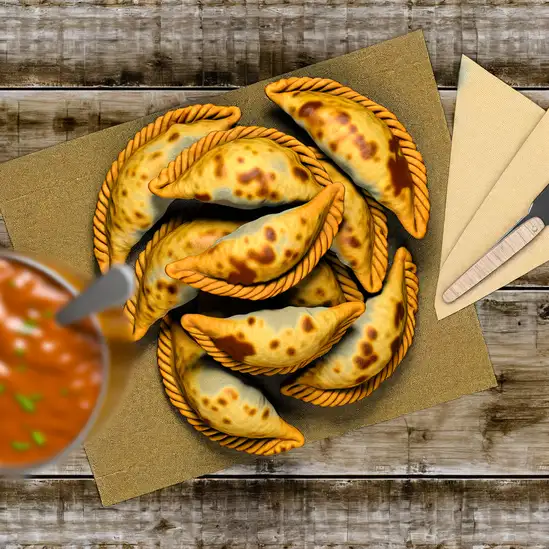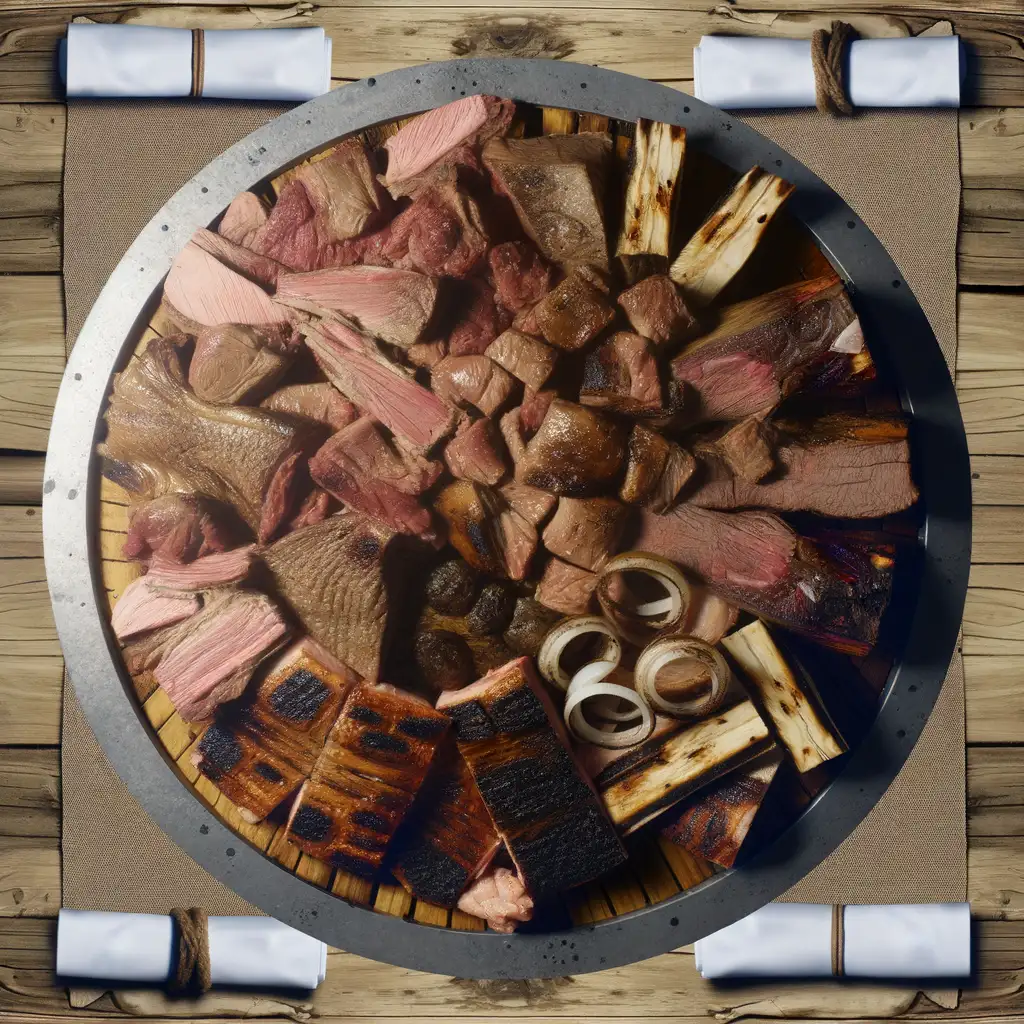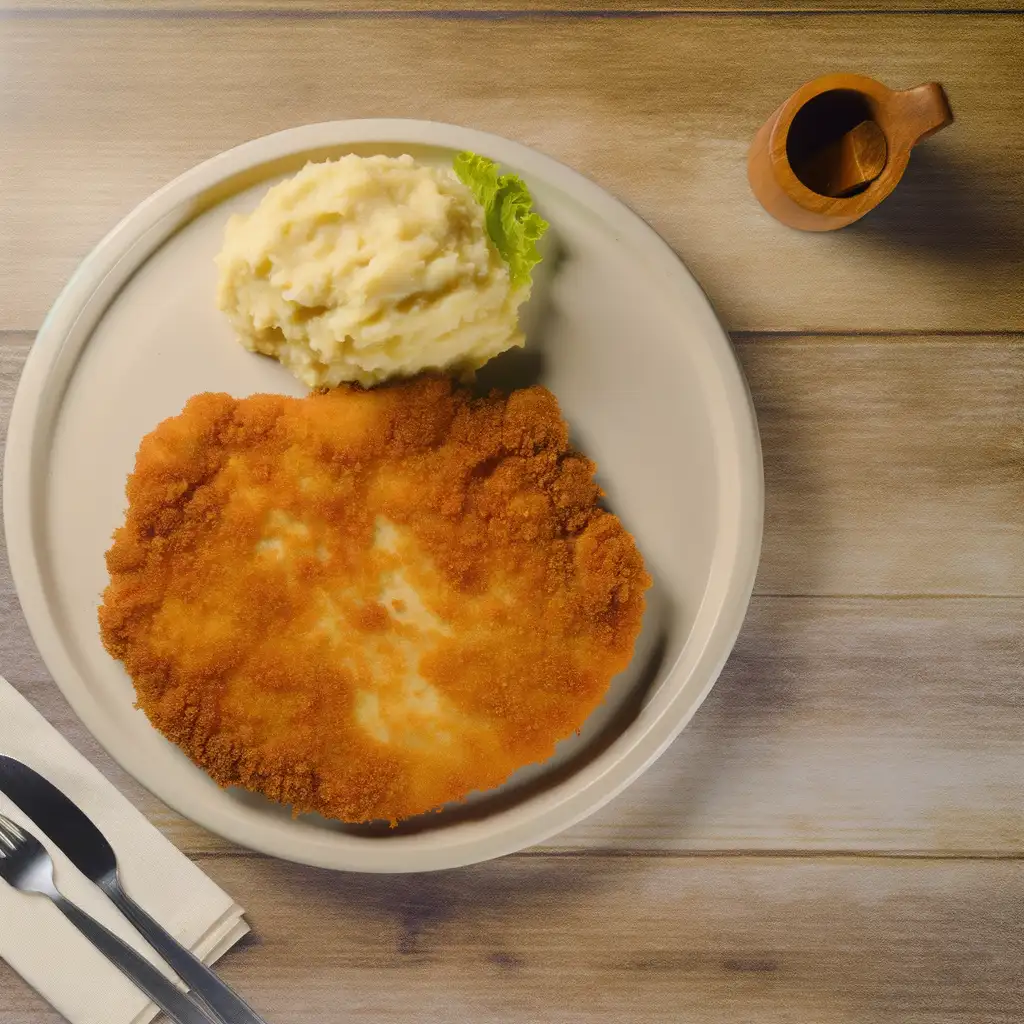



If you ever find yourself craving a place where nature’s calmness wraps around you like a soft blanket,Santa Rosa de Calamuchita is that kind of spot. Nestled in the lush valleys of Córdoba,this town hums with a gentle rhythm—part mountain breeze,part flowing river—that instantly slows your pace. Walking through its streets,you’ll catch the scent of pine mingling with fresh earth,and the distant laughter of locals enjoying a late afternoon mate. It’s the kind of place where time feels generous,inviting you to linger over a coffee or simply watch the clouds drift over the Sierras. What really makes Santa Rosa stand out is its blend of rustic charm and warm community spirit. The town’s colorful houses,with their red-tiled roofs and wooden balconies,seem to lean into the landscape,as if they’ve grown from the soil itself. Local artisans sell handwoven textiles and pottery in cozy markets,and the food—oh,the food!—is a comforting mix of hearty Argentine flavors:think tender grilled meats,fresh river trout,and homemade empanadas that melt in your mouth. But beyond the sights and tastes,it’s the feeling of connection here that stays with you. Whether you’re hiking through the nearby hills,dipping your toes in the crystal-clear rivers,or chatting with a friendly shop owner,Santa Rosa de Calamuchita invites you to slow down,breathe deeply,and savor the simple joys. It’s not just a destination; it’s a warm embrace from a place that knows how to make you feel at home.
The information on this page is currently being reviewed by Tripkliq and should be used as a guide only
Eng word: Hello
Eng pronunciation: OH-lah
Local language: Hola
Eng word: Goodbye
Eng pronunciation: ah-DYOS
Local language: Adiós
Eng word: Thank you
Eng pronunciation: GRAH-syahs
Local language: Gracias
Eng word: How much
Eng pronunciation: KWAN-toh KWEH-stah
Local language: ¿Cuánto cuesta?
Eng word: Toilet
Eng pronunciation: BAH-nyoh
Local language: Baño
Eng word: Help me
Eng pronunciation: ah-YOO-dah-meh
Local language: Ayúdame
Eng word: Yes
Eng pronunciation: SEE
Local language: Sí
Eng word: No
Eng pronunciation: NO
Local language: No
Eng word: Excuse me
Eng pronunciation: pehr-DOHN
Local language: Perdón
Santa Rosa de Calamuchita was officially founded on September 10,1877. The town grew around the Santa Rosa River, which has been a vital resource for the community and a key attraction for visitors.
During the 17th and 18th centuries, Jesuit missionaries played a significant role in the region, establishing estancias (ranches) and promoting agriculture, which laid the foundation for the area's economic development.
The Santa Rosa River has been central to the town's history, providing water for agriculture and serving as a recreational hub for locals and tourists alike. Its crystal-clear waters are a defining feature of the region.
Santa Rosa de Calamuchita is known for its charming colonial-style architecture, which reflects the town's rich history and cultural heritage. Many of these buildings have been preserved and are a highlight for visitors.
In the late 19th and early 20th centuries, European immigrants, particularly from Germany, Italy, and Spain, settled in the area, contributing to the town's cultural diversity and traditions.
Santa Rosa de Calamuchita began to emerge as a tourist destination in the mid-20th century, thanks to its stunning natural landscapes, including mountains, rivers, and forests, which attract visitors year-round.
The nearby town of Villa General Belgrano, just a short drive from Santa Rosa de Calamuchita, is famous for its Oktoberfest celebrations. This event highlights the region's German heritage and attracts thousands of visitors annually.
The Chapel of Our Lady of the Rosary is one of the oldest religious buildings in the area, dating back to the town's early years. It remains a place of worship and a historical landmark.
Santa Rosa de Calamuchita is located in the heart of the Calamuchita Valley, a region known for its breathtaking landscapes, outdoor activities, and rich history. The valley has been inhabited for centuries, with evidence of indigenous settlements.
In Santa Rosa de Calamuchita, the most common Power Adaptor is Type C, Type I.



Savory pastries filled with a variety of ingredients such as beef, chicken, cheese, or vegetables, often baked or fried.

A traditional Argentine barbecue featuring various cuts of beef, pork, and sometimes chicken, cooked on a grill or open fire.

A hearty stew made with corn, beans, potatoes, and meat, typically enjoyed during national holidays.

Breaded and fried meat cutlet, similar to a schnitzel, often served with mashed potatoes or salad.

A popular street food consisting of a chorizo sausage served in a crusty bread roll, often topped with chimichurri sauce.

A sweet caramel-like spread made from slowly heating sweetened milk, commonly used in desserts and pastries.

A grilled provolone cheese dish, often seasoned with oregano and served as an appetizer.

Buenos Aires feels like a city that’s alive in every sense — vibrant,passionate,and endlessly inviting. From the moment you step onto its bustling streets,you’re wrapped in a mix of old-world charm and modern energy. The air carries the scent of freshly baked medialunas mingling with the faint,smoky aroma of asado grilling nearby. You’ll hear the rhythmic clatter of tango dancers’ heels on cobblestones,blending with the lively chatter spilling out of cafés and the distant hum of street musicians playing soulful melodies.
Walking through neighborhoods like San Telmo or Palermo,you’ll notice the colorful murals that tell stories of the city’s rich history and rebellious spirit. The architecture is a fascinating patchwork — elegant French-style buildings stand shoulder to shoulder with vibrant street art and quirky boutiques. There’s a warmth in the way porteños (locals) greet each other,a genuine friendliness that makes you feel like you’re part of the city’s ongoing story.
And then there’s the food — oh,the food! Juicy,perfectly grilled steaks paired with Malbec that tastes like it was made just for you. Empanadas bursting with flavor,and dulce de leche desserts that melt in your mouth. Buenos Aires isn’t just a place to visit; it’s a place to savor,to dance,to lose yourself in the rhythm of life. Trust me,once you’ve wandered its streets and soaked in its spirit,you’ll carry a piece of Buenos Aires with you long after you leave.
If you ever find yourself craving a place where nature’s grandeur meets cozy,small-town charm,San Carlos de Bariloche is where you want to be. Imagine waking up to the crisp,pine-scented air,with the shimmering waters of Lake Nahuel Huapi stretching out before you,framed by snow-capped Andes peaks. The vibe here is relaxed but alive—locals and travelers alike gather in rustic cafés,their laughter mingling with the clinking of coffee cups and the rich aroma of freshly brewed Argentine espresso.
Walking through Bariloche’s streets feels like stepping into a storybook. Wooden chalets with colorful shutters line the avenues,and the scent of chocolate wafts from every corner,a nod to the city’s famous artisanal chocolatiers. You’ll hear the soft crunch of snow underfoot in winter or the gentle rustle of leaves in summer,while the distant call of birds adds a natural soundtrack to your explorations. The city pulses with a blend of European alpine influences and Patagonian spirit,creating a unique cultural tapestry that’s both warm and inviting.
What really makes Bariloche unforgettable is how it invites you to slow down and savor the moment. Whether you’re hiking through ancient forests,savoring a plate of fresh trout by the lake,or simply watching the sunset paint the mountains in shades of pink and gold,there’s a deep sense of peace here. It’s a place that stays with you long after you leave,whispering stories of wild beauty and heartfelt hospitality.
Rosario has this effortlessly vibrant energy that grabs you the moment you step onto its wide,tree-lined streets. It’s a city where the rhythm of daily life feels both relaxed and alive,like a slow dance with a lively beat underneath. Walking along the Paraná River,you’ll catch the scent of fresh bread from nearby bakeries mixing with the earthy aroma of the river,while locals jog,chat,and sip mate in the parks. The skyline,dotted with modern buildings and historic architecture,reflects a city proud of its roots but eager to embrace the future.
What really makes Rosario stand out is its deep connection to art and culture. Murals splash color across walls,telling stories of history and hope,while street musicians fill the air with tango,rock,and folk tunes. The city’s cafes invite you to linger over a cortado or a slice of medialuna,watching life unfold around you. And if you’re a foodie,Rosario’s culinary scene is a delightful surprise—imagine savoring perfectly grilled Argentine beef at a parrilla,paired with a glass of Malbec,all while the sun sets over the river.
There’s a warmth in the people here that’s impossible to miss. Whether you’re chatting with a vendor at the Mercado del Patio or joining locals in a lively plaza,you feel part of a community that’s proud,passionate,and welcoming. Rosario isn’t just a place to visit—it’s a place to feel alive,to soak in the stories,and to create your own.
Imagine stepping into a place where the wildness of nature meets the warmth of a close-knit community—that’s Ushuaia for you. Nestled at the very tip of South America,this city feels like the edge of the world,with snow-capped mountains standing guard over the deep blue waters of the Beagle Channel. The air is crisp and fresh,carrying hints of pine and salty sea spray,and when you walk along the harbor,you can almost hear the distant call of sea lions mingling with the chatter of locals and travelers alike.
Ushuaia’s charm isn’t just in its dramatic landscapes but in its spirit. The streets hum with a quiet energy—cozy cafés filled with the rich aroma of freshly brewed coffee,small artisan shops showcasing handmade woolen goods,and restaurants where you can savor Patagonian lamb or freshly caught king crab,each bite bursting with the rugged flavors of the region. There’s a ruggedness here,sure,but also a surprising softness in the smiles of the people who’ve carved out a life in this remote corner.
What really stays with you is the sense of adventure that pulses through the city. Whether you’re gearing up for a trek through Tierra del Fuego National Park,hopping on a boat to spot penguins,or simply watching the sunset paint the sky in fiery hues,Ushuaia invites you to slow down and soak it all in. It’s a place that feels alive,raw,and deeply welcoming—like a story you’re eager to be part of.
Imagine strolling along a sun-dappled Rambla,the salty breeze from the Río de la Plata mingling with the rich aroma of freshly brewed coffee and grilled meats wafting from nearby cafés. That’s Montevideo for you—a city that feels like a warm embrace,where the pace is unhurried but the energy hums quietly beneath the surface. It’s a place where old-world charm meets a laid-back coastal vibe,and every corner invites you to slow down and savor the moment.
Walking through Ciudad Vieja,the historic heart,you’ll hear the clatter of footsteps on cobblestones,the murmur of locals chatting over mate,and the occasional strum of a guitar from a street musician. The colorful murals and colonial architecture tell stories of a city proud of its roots yet open to creative expression. Montevideo’s markets burst with fresh produce,artisanal cheeses,and the unmistakable scent of asado grilling—Uruguay’s beloved barbecue that’s as much a social ritual as a meal.
What makes Montevideo truly special is its genuine warmth. People here have a relaxed friendliness that makes you feel like you belong,even if you’re just passing through. Whether you’re sipping a craft beer in a cozy bar or watching the sunset paint the sky over the coastline,there’s a comforting rhythm to life here that stays with you long after you leave. It’s not just a city to visit—it’s a place to experience,to breathe in,and to carry with you.
Imagine stepping into a place where time seems to slow down,and every cobblestone street whispers stories from centuries past—that’s Colonia del Sacramento. The moment you arrive,there’s this gentle,laid-back rhythm in the air,a blend of old-world charm and seaside calm that instantly puts you at ease. As you wander through the historic quarter,your eyes catch the sun casting golden hues on whitewashed walls,while the salty breeze from the Río de la Plata mingles with the faint aroma of freshly baked pastries from a nearby café.
The city’s character is a beautiful patchwork of Portuguese and Spanish influences,visible in its colorful buildings and quaint plazas. You’ll hear the soft murmur of locals chatting in Spanish,the clinking of glasses as people savor a glass of Tannat wine,and the distant hum of boats bobbing gently in the harbor. There’s a warmth here—not just in the weather,but in the way people welcome you,eager to share stories or recommend their favorite spot for a slow,leisurely lunch.
Don’t miss the chance to climb the old lighthouse for sweeping views that stretch across the water,or to lose yourself in the narrow alleys where timeworn doors and blooming bougainvillea create perfect little photo moments. And when evening falls,the city glows softly under lantern light,inviting you to linger over a plate of fresh seafood and a glass of local wine,soaking in the peaceful magic that makes Colonia feel like a place you’ll want to return to again and again.
Unsuspecting tourists may receive counterfeit bills as change, especially in busy markets or from street vendors.
Scammers create fake rental listings for cabins or vacation homes online, asking for an advance deposit. Once the payment is made, the property either doesn't exist or is unavailable.
Vendors may sell mass-produced items as 'authentic' local crafts, charging premium prices for goods that are not genuinely handmade or local.
Tourists are charged inflated prices for guided tours, excursions, or adventure activities that are either subpar or not delivered as promised.
Some restaurants may add hidden charges or inflate the bill, especially if they notice the customer is a tourist.
Street performers or individuals posing as performers may aggressively demand tips after engaging with tourists, even if the interaction was unsolicited.
Some taxi drivers may take longer routes or claim their meter is broken to charge tourists higher fares.
Argentina has strict laws regarding drug use and possession. While personal use of small amounts of marijuana has been decriminalized in certain cases, possession of drugs in public or for recreational use can still lead to legal issues, including fines or detention. Trafficking, distribution, or possession of larger quantities is a serious crime with severe penalties. Tourists should avoid any involvement with illegal drugs to prevent legal complications.
In Santa Rosa de Calamuchita, as in the rest of Argentina, smoking is regulated under national laws. Smoking is prohibited in enclosed public spaces, workplaces, and on public transportation. This includes restaurants, bars, and other indoor venues. Some outdoor areas, such as parks or beaches, may allow smoking, but it is always advisable to check for signage or ask local authorities. Violations can result in fines.
Vaping is subject to similar restrictions as smoking in Argentina. The use of electronic cigarettes is prohibited in enclosed public spaces, workplaces, and public transportation. Additionally, the sale and advertising of vaping products are heavily regulated, and some provinces or municipalities may have stricter rules. Tourists should avoid vaping in restricted areas to avoid fines or penalties.
What are other people saying about Santa Rosa de Calamuchita?
Recent Social posts about Santa Rosa de Calamuchita
There is nothing to show you for now.